#Anders Ekman
Explore tagged Tumblr posts
Text

Anders Ekman (Finnish, 1833-1855) Kaupunginportti "Neusser Thor", 1850-55 Finnish National Gallery
#Anders Ekman#Kaupunginportti#Neusser Thor#finnish art#finnish#finland#art#fine art#european art#classical art#europe#european#fine arts#europa#classic art#1800s#artwork#drawing#castle
99 notes
·
View notes
Video
youtube
Professor Pascal Lottaz & Journalisten Katja Ekis Ekman: Trickle-Down-Hegemonie ~ Wie die USA Europas Denken lenken
----------------------------------
30.01.2025 - Neutrality Studies
---------------------------------
Washington hat einen beispiellosen Einfluss auf Europa. Wenn Washington "spring" sagt, antworten die Europäer "wie hoch?" Aber das war nicht immer so. Es gab einmal ein Europa unabhängiger Staaten, keine US-Satelliten. Es gab das Europa von Olaf Palme, Willy Brandt oder Bruno Kreisky, das eine entschieden andere Außenpolitik als die USA verfolgte. Wo ist dieser Ort geblieben? Heute spreche ich mit Kajsa Ekis Ekman, einer schwedischen Journalistin, Aktivistin und Autorin von vier Büchern über Menschenhandel, Prostitution und die Wirtschaft. Sie ist derzeit Chefredakteurin von Parabol Press. Zuvor arbeitete Frau Ekman für verschiedene schwedische Medien, wurde jedoch 2022 entlassen, nachdem sie kritisch über den sich entfaltenden russisch-ukrainischen Krieg berichtet hatte.
Mehr von Kajsa Ekis Ekman: https://www.parabol.press
Original Video:
• Trickle-Down Hegemony: How The US Controls The European Mind: https://www.youtube.com/watch?v=rjjYWc8EJ3w
Original Transcript:
https://www.video-translations.org/transcripts/228_Pascal_2025_01_29.pdf
Translated Transcript:
https://www.video-translations.org/transcripts/228_Pascal_2025_01_29_de-DE.pdf
Produced by:
Neutrality Studies
Originally Published on:
2025-01-29
Translations by:
www.video-translations.org
Disclaimer:
Read by A.I. Voices. Auto-translated.
This video is owned by this channel.
----------------------------------------------------
0 notes
Video
Zarah Leander by Truus, Bob & Jan too! Via Flickr: Dutch or Belgian postcard, no. A.X. 290-89. Glamorous, mysterious diva Zarah Leander (1907-1981) was a Swedish actress and singer, who is now best remembered for her German songs and films from the late 1930s and early 1940s. With her fascinating and deep voice, she sang melancholy and a bit frivolous songs specifically composed for her. Zarah was for a time the best-paid film star of the Third Reich. In her Ufa vehicles, she always played the role of a cool femme fatale, independently minded, beautiful, passionate, self-confident and a bit sad. It gave her the nickname 'the Nazi Garbo', but a recent book claims that she was, in fact, a Soviet spy Zarah Leander was born Sara Stina Hedberg in Karlstad, Sweden, in 1907. Her parents were Anders Lorentz Sebastian Hedberg and Matilda Ulrika Hedberg. Although she studied piano and violin as a small child and sang on stage for the first time at six, Sara initially had no intention of becoming a professional performer. She led an ordinary life for several years. As a teenager, she lived for two years in Riga (1922���1924), where she learned German and worked as a secretary. She married actor Nils Leander in 1926, and they had two children: Boel (1927) and Göran (1929). In 1929, she had her breakthrough when her counter-alt voice was recognised by revue king Ernst Rolf. In his touring cabaret, she sang for the first time 'Vill ni se en stjärna' (Do you want to see a star?) which soon would become her signature tune. She got a record contract with the Odeon company, for which she recorded 80 songs till 1936. One of the songs she recorded in 1930 was Marlene Dietrich's 'Ich bin von Kopf bis Fuß auf Liebe eingestellt' from Der Blauen Engel/The Blue Angel (Josef von Sternberg, 1930). In the early 1930s, Leander played in several shows and performed in three Swedish films, including Dantes Mysterier/Dante's Mysteries (Paul Merzbach, 1930) and Falska Millionären/The False Millionaire (André Berthomieu, Paul Merzbach, 1931). Her persona in those films was already that of the singing, mundane vamp. She had her definitive breakthrough as Hanna Glavari opposite the legendary Swedish film star Gösta Ekman in Franz Lehár's operetta 'Die lustige Witwe' (The Merry Widow) (1931). In 1932 she divorced Nils Leander. She declined American work offers but she opted for an international career on the European continent because of her two school-age children. In 1936 she went to Vienna to star at the Theater an der Wien in the operetta 'Axel an der Himmelstür', composed by Ralph Benatzky and directed by Max Hansen. This parody of Hollywood and Greta Garbo was a huge success. She also got the role of a successful revue star in the Austrian film Premiere (Geza von Bolvary, 1936) with Karl Martell. Then she was offered a three-film contract by the German Universum Film AG (Ufa) studios, as propaganda minister Joseph Goebbels was looking for a new muse of the cinema of the Third Reich. She would earn approximately 200,000 Reichsmark and 53% of her gage would be paid in Swedish Kronor (crowns). Leander said "yes", despite the political situation. Zarah Leander's first film at Ufa was Zu neuen Ufern/To New Shores (1936) directed by Detlef Sierck (later known as Douglas Sirk). After the other two films of her contract, La Habanera/Cheated by the Wind (Detlef Sierck, 1937) with Ferdinand Marian, and Heimat/Home (Carl Froelich, 1938) with Heinrich George, she was so popular that Josef Goebbels, who according to his diaries did not like her, had to continue her contract. On renewal, her salary increased even further, and in 1940 the Ufa offered her a contract for six films, to be produced in the following two years, for a total of 1 million Reichsmark. Zu neuen Ufern had launched songs such as 'Ich steh' im Regen' (Standing in the rain) and 'Yes, Sir', that were sold on record in various languages. These songs earned her more money than her films, even if she was the best-paid German female film star in the early 1940s. Her songs 'Davon geht die Welt nicht runter' (It is not the End of the World) and 'Ich weis, es wird einmal ein Wunder gescheh'n' (I Know One Day a Miracle Will Happen) from her film Die grosse Liebe/The Great Love (Rolf Hansen, 1942) received double entendre in the time they were distributed and struck chords with the Germans. Among her other films in those years were the comedy Der Blaufuchs/The Blue Fox (Viktor Tourjansky, 1938) with Paul Hörbiger, a biopic of Pyotr Ilyich Tchaikovsky, Es war eine rauschende Ballnacht/It was a Gay Ball Night (Carl Froelich, 1939) with Marika Rökk, Der Weg ins Freie/The Way to Freedom (Rolf Hansen, 1941) with Hans Stüwe, and the crime film Damals/In the Past (Rolf Hansen, 1942) again opposite Hans Stüwe. In her films, Leander often portrayed independent, fatal women, with strong will-power but haunted by destiny. In real life, she was a 'tough cookie' too, as she demanded that she should select her scripts and composers. At a party, Goebbels once asked her ironically: "Zarah... Isn't this a Jewish name?" "Oh, maybe", she answered him, "but what about Josef?" "Hmmm... yes, yes, a good answer", Goebbels had replied, according to IMDb. Zarah Leander never became a party member and refused to take German citizenship, but her films and song lyrics were viewed by some as propaganda for the Nazi cause. After her villa in the fashionable Berlin suburb of Grunewald was bombed during an air raid in 1942 and the increasingly desperate Nazis pressured her to apply for German citizenship, she decided to break her contract with Ufa. In 1943, she secretly left Germany and retreated to Sweden, where she bought a mansion at Lönö, not far from Stockholm. Initially, she was shunned by much of the artistic community and public in Sweden (In 1936 the reactions were completely different when she started to work in Nazi Germany. Most of her Ufa films were very popular in Sweden as in the rest of Europe). In November 1944, Swedish radio decided to no longer play her records. But, as Antje Ascheid describes in her in-depth study 'Hitler's Heroines', Zarah's role was complex: "She regularly supported communal fundraisers and appeared in 'request concerts' - live radio shows in which famous star singers performed songs requested mostly by soldiers on the front - that aired all over the Reich. In addition, Leander was frequently depicted attending social functions at the homes of political leaders, which further linked her public persona to Nazi officials in power." After the war, she was severely questioned, but in 1947 she managed to record her songs again in Switzerland, where she also sang for the radio. Concert tours followed, first in Switzerland, then in 1948-1949 in Germany; and in 1949 she performed in Sweden again. Leander tried her luck once more in the film. Gabriela (Geza von Cziffra, 1950) was the third biggest box office hit of that year in Germany. The following films, Cuba Cubana (Fritz Peter Buch, 1952) with the new and younger idol O. W. Fischer, and Ave Maria (Alfred Braun, 1953) with her old partner Hans Stüwe, were both disappointments. Thus Zarah Leander's film career came to an end, even though she still did four more films till 1966. Her last film was the Italian comedy Come imparai ad amare le donne/Love Parade (Luciano Salce, 1966) with Michèle Mercier, Nadja Tiller, and Anita Ekberg. Leander would continue with musicals and operettas on stage, however, and she also sang her now evergreens in TV shows. She published her memoirs, 'Zarah's minion' (Zarah's Memories), in 1972. In 1975 she played in her last musical, 'Das Lächeln einer Sommernacht' by Stephen Sondheim and Hugh Wheeler based on Ingmar Bergman's film Sommernattens leende/Smiles of a Summer Night (1955). In 1979 Zarah Leander officially retired and in 1981 she died of a stroke in Stockholm and was buried on her estate Lönö. She was married three times. After Nils Leander, she was married to journalist Vidar Forsell (1932-1943). Her third husband was pianist Arne Hülphers from 1956 till his death in 1978. In 2003 a bronze statue was raised in Zarah Leander's hometown of Karlstad at the Opera House of Värmland where she began her career. After years of discussions, the town government, at last, accepted this statue on behalf of the first Swedish local Zarah Leander Society. A year later the book 'The Mystery of Olga Chekhova' (2004) by Anthony Beevor was published, in which the author claimed that both Olga Tschechova and Zarah Leander worked for Soviet intelligence during World War II. According to the author she supplied information about Nazi Germany to a Soviet contact during her visits home to Sweden. In Germany, Zarah Leander is still an icon of the gay community, and her persona has been recreated by many drag queens. Performers like Nina Hagen have covered her songs, and director Quentin Tarantino used her song 'Davon geht die Welt nicht runter' (It is not the End of the World) in his war thriller Inglourious Basterds (2009). Sources: Antje Ascheid (Hitler's Heroines), Paul Seiler (Das Zarah-Leander-Archiv), Lennart Haglund (Find A Grave), Wikipedia and IMDb. And, please check out our blog European Film Star Postcards.
#Zarah Leander#Zarah#Leander#Swedish#Actress#Singer#Diva#European#Film Star#Movie Star#Cinema#Cine#Kino#Picture#Screen#Movie#Movies#Filmster#Star#Glamour#Allure#Vintage#Postcard#flickr
0 notes
Text


Testbild! - Bed Stilt [QUI014]
Songs recorded in Malmö 2005-2006, with additional overdubs in 2023 and 2024.
Cover art - Amanda de Frumerie Cover design – Juliana De Nicola Mastering - Tomas Bodén
Matching breezy, Bossa nova-tinged sophistication with softly spiralling psychedelia, Testbild! arrive in the Quindi lounge as though they've always been there. On their 12th album, Bed Stilt, the Swedish collective cast their attention back to the earlier days of their 25-year trip through sweetly mysterious pop-not-pop rendered in warm tones and shot through with surrealism.
It's tricky to get a precise fix on the story and structure of Testbild! The project was spearheaded by Petter Herbertsson in his hometown of Malmö in the late 90s, although the story on their website credits the inspiration and source material to a chance meeting and unpublished manuscript from a retiring scientist. The collective's evolution since then is a tangled web of facts and fiction spun by a revolving cast of collaborators including Siri af Burén, Katja Ekman, Rikard Heberling, Douglas Holmquist, Mattias Nihlén and Petter Samuelsson. Along the way, their music has touched on chamber pop, post-punk and modern jazz with the elaborate harmonies and catchy songwriting charm of the Canterbury scene.
The tracks which make up Bed Stilt were in fact track recorded in Malmö back in the mid- 00s, lying in wait for the right opportunity to be brought to light with some delicate overdubs and finishing flourishes in the here and now. The core musicians working on the record were Herbertsson and Douglas Holmquist on a similarly expansive list of vocals, guitars, bass, synths and keys, Siri af Burén on lead vocals and Mattias Nihlén on synths and additional mixing. Meanwhile Tomas Bodén — better known as Civilistjavel — lent some additional synth work as well as mastering the record. Musically, Testbild! stay true to their idiosyncratic approach on Bed Stilt with six immaculately rendered sojourns through lilting harmonies and brushed rhythms, feeling nostalgic but beguiling in equal measure. Theirs is a luxurious sound, not least on the opening strains of 'The First New Years Eve,' which purrs to life draped in silky Rhodes and chiming vibes. Behind this comfortable veneer the enigmatic lyrical themes unfurl through Herbertsson, Holmquist and af Burén's vocal harmonies like fractalised puzzles waiting to be solved. The finger-picking delicacy and languid harmonica of 'Streams' strike a pastoral mood neatly countered by the elegant slide into dislocated ambience for the track's final stretch. By contrast, 'And Her Eyes Are Red' surges with a big beat urgency which plays beautifully with the mellow jazziness of the chord sequences, boldly toying with song structure to dart down curious tangents without losing the immediate impulse of a great pop record. Somewhere in this tension between clarity and chaos we can understand the addictive charm of Testbild! — a band steeped in the considerable craft of making accomplished and unconventional music so very easy to sink into. If that doesn't make for a perfect addition to the Quindi catalogue, we don't know what does.
On these recordings Testbild! were:
Petter Herbertsson - lead and backing vocals, guitars, electric bass, piano, vibraphonette, Fender Rhodes, Roland SH-1000, Mellotron Mikro, Moog Voyager, banjo, ukulele, harmonica, percussion
Douglas Holmquist - lead and backing vocals, guitars, synths, vibraphonette, percussion, drum programming
Siri af Burén - lead vocals
Mattias Nihlén - synths, remix
Guests:
Tomas Bodén - synths Peter Jackson - synths
Thanks: Anders Hansson, Ann Jäderlund, Nic, Marleen Nilsson
Released September 27, 2024
1 note
·
View note
Text
Liebesgeständnisse: Wann und wie man seine Gefühle ausdrückt

Liebesgeständnisse markieren wichtige Momente in Beziehungen. Sie ermöglichen es, tief empfundene Gefühle zu teilen und die emotionale Bindung zu stärken. Das Timing und die Formulierung sind dabei entscheidend. Es ist essenziell, sich sicher und geborgen zu fühlen, bevor man Gefühle teilt. Studien zeigen, dass viele Menschen in ihren Beziehungen die Worte „Ich liebe dich“ aussprechen. Doch während einige dies aufregend finden, fühlen andere Unsicherheit und Zögern. Der US-amerikanische Psychologe Paul Ekman unterstreicht die Bedeutung von Emotionen in Beziehungen. Ein gut überlegtes Liebesgeständnis kann viel bewirken, vor allem wenn du weißt, wie und wann du es äußern möchtest. Wenn du mehr über das perfekte Liebesgeständnis erfahren möchtest, schau dir diese nützlichen Fragen an. So findest du heraus, was deiner Beziehung gut tut. Schlüsselerkenntnisse - Die Atmosphäre sollte sicher und vertraut sein, um Gefühle offenbaren zu können. - Studien zeigen, dass sowohl Männer als auch Frauen bereit sind, „Ich liebe dich“ auszusprechen. - Ein gut durchdachtes Liebesgeständnis kann große Auswirkungen auf eine Beziehung haben. - Nonverbale Ausdrucksweisen, wie kleine Aufmerksamkeiten, sind ebenso wichtig. - Es wird empfohlen, das erste Liebesgeständnis nicht in digitaler Form zu übermitteln. Die Bedeutung von Liebesgeständnissen Liebesgeständnisse sind zentral für unsere emotionale Kommunikation. Sie sind mehr als nur Worte; sie sind tief in unserer Verbindung verwurzelt. Die Bedeutung von Liebesgeständnissen geht über das bloße Sagen von „Ich liebe dich“ hinaus. Sie fördern das Vertrauen und stärken die Bindung zwischen Partnern durch emotionale Liebesbotschaften. Warum es wichtig ist, Gefühle zu zeigen Gefühle zu teilen schafft ein offenes Beziehungsklima. Regelmäßiges Ausdrücken von Gefühlen führt oft zu einer intensiveren Intimität und Zufriedenheit. Einfache Gesten sind mächtige Liebesbeweise. 53% der Befragten sagen einmal pro Woche „Ich liebe dich“. Der bewusste Umgang mit Liebesbekundungen hält die Zuneigung am Leben. Die Auswirkungen von Liebesbekundungen auf Beziehungen Die Wirkung von emotionalen Liebesbotschaften ist groß. Studien zeigen, dass Paare, die ihre Liebe oft äußern, weniger Missverständnisse haben und Konflikte besser lösen. Kurze Geständnisse, wie „Du machst mich glücklich“, stärken die Beziehung. Viele finden Inspiration in den Liebesgeständnissen bekannter Persönlichkeiten. Der richtige Zeitpunkt für ein Liebesgeständnis Der zeitpunkt für Liebesgeständnisse ist für die Entwicklung einer Beziehung sehr wichtig. Es gibt keine feste Regel, wann man sagen sollte: „Ich liebe dich“. In neuen Beziehungen ist es oft verlockend, schnell Gefühle zu teilen. Doch es ist klug, den Moment sorgfältig abzuwägen. Studien zu Zeitpunkten für Liebesgeständnisse Ein Umfrage ergab, dass 20% der Deutschen ihre Liebe in der ersten Woche teilen. Männer sind dabei offenbar 26% der Fälle, während Frauen mit 14% weniger offensiv sind. Interessant ist auch, dass 23% der Befragten nach einem Monat ihre Gefühle aussprechen. Unterschiede zwischen Männern und Frauen Die unterschiede zwischen Geschlechtern beeinflussen, wann man seine Liebe gesteht. Männer sind oft direkter und neigen dazu, früher ihre Gefühle zu teilen. Frauen sind vorsichtiger und brauchen mehr Zeit, um ihre Gefühle zu verstehen. Diese Unterschiede beeinflussen, wie Paare ihre Beziehung vertiefen und sich zueinander beziehen. Liebesgeständnisse: Wann solltest du deine Gefühle offenbaren? Die Entscheidung, wann ein Liebesgeständnis sinnvoll ist, hängt stark von den Phasen der Beziehung ab. Jede Phase bringt eigene Dynamiken mit sich, die den optimalen Zeitpunkt bestimmen. Ein tiefes Verständnis des Wohlfühl-Levels zwischen den Partnern ist entscheidend. Es hilft, Missverständnisse und emotionale Überwältigung zu vermeiden. Angemessene Phasen der Beziehung für Liebesgeständnisse Im Anfangsstadium ist es oft schwierig, Gefühle offen zu teilen. 58 % der Menschen gestehen ihre Liebe erst aus, wenn sie eine echte Zuneigung verspüren. 31 % warten, bis sie sicher sind, dass der andere eine ernsthafte Beziehung sucht. Ein durchdachter Ansatz ist hier wichtig, um Unsicherheiten zu vermeiden. Wie sich das Wohlfühl-Level auf den Zeitpunkt auswirkt Das Wohlfühl-Level ist entscheidend für den richtigen Zeitpunkt des Liebesgeständnisses. Ein intimes Umfeld, in dem beide Partner emotional sicher sind, erhöht die Erfolgschancen. Der Kontext beeinflusst die Wahrnehmung des Geständnisses stark. Studien zeigen, dass ein Liebesgeständnis in turbulenten oder öffentlichen Situationen nicht ideal ist. 58 % benötigen mindestens drei Monate, um sich bereit zu fühlen, ihre Gefühle auszudrücken. Dies unterstreicht die Bedeutung, den richtigen Moment abzuwarten. Die Kunst, deine Gefühle auszudrücken Das Ausdrücken eigener Gefühle ist eine der schwierigsten, aber auch wertvollsten Fähigkeiten in einer Beziehung. #gesundheit #fitness #lifestyle #beziehungen #achtsamkeit Original Content von: https://www.gutundgesund.org/ Lesen Sie den ganzen Artikel
1 note
·
View note
Text
Veronika
Veronika (Serie 2024) #AlexandraRapaport #TobiasSantelmann #ArvinKananian #AndersMossling #BaxterRenman #PerGraffman Mehr auf:
Serie Jahr: 2024- (März) Genre: Drama / Thriller Hauptrollen: Alexandra Rapaport, Tobias Santelmann, Arvin Kananian, Anders Mossling, Baxter Renman, Per Graffman, Eddie Eriksson Dominguez, Sarah Rhodin, Emelie Garbers, Sanna Ekman, Adrian Macéus, Olle Sarri, Karin Bertling, Moses Ternedal … Serienbeschreibung: Als eine polizistin, die abhängig von Tabletten ist, einen toten Jungen sieht,…

View On WordPress
0 notes
Photo

Åke Grönberg and Harriet Andersson in Sawdust and Tinsel (1953)
Cast: Åke Grönberg, Harriet Andersson, Hasse Ekman, Anders Ek, Gudrun Brost, Annika Tretow, Erik Strandmark, Gunnar Björnstrand, Curt Löwgren. Screenplay: Ingmar Bergman. Cinematography: Hilding Bladh, Sven Nykvist. Production design: Bibi Lindström. Film editing: Carl-Olov Skeppstedt. Music: Karl-Birger Blomdahl.
When Sawdust and Tinsel was first released in the United States it was called The Naked Night, probably by exhibitors who wanted to cash in on the reputation Swedes had gained for being sexy, but especially because the film's star, Harriet Andersson, had just appeared in the nude in Summer With Monika (Ingmar Bergman, 1953), which had been passed off in some markets as a skin flick. With its shabby, bankrupt circus and its frustrated, destructive relationships it's hardly that. (The Swedish title, Gycklarnas Afton, can be translated as something like "Evening of a Clown.") Some call it a masterpiece, but it seems to me to lean too heavily on the familiar trope of the circus as a microcosm of the world, emphasizing the grunge (sawdust) and fake glamour (tinsel) of its current English title. What it has going for it is the cinematography of Sven Nykvist: It was his first film for Bergman; they didn't work together again until 1960 and The Virgin Spring, but it became one of the great partnerships in filmmaking. The opening sequence of the tawdry little circus caravan trundling across the landscape is superbly filmed, and I can't help wondering if Bergman and Gunnar Fischer, the cinematographer of The Seventh Seal (1957), didn't have it in mind when they created the iconic shot of Death and his victims silhouetted against the sky in that later film. The performances, too, are excellent: Åke Grönberg as Albert, the worn-out circus owner; Andersson as his restless mistress, Anne; Hasse Ekman as Frans, the actor who rapes her; Anders Ek as the half-mad clown, Frost; and Annika Tretow as Albert's wife, who has gone on to be a success in business after he left her. But the story is heavily formula-driven: There is, for example, a rather clichéd sequence in which Albert toys with suicide, which too obviously echoes an earlier moment when Frans hammily rehearses a scene in which he kills himself while Anne watches offstage. In the end, the movie is rather like a version of I Pagliacci without the benefit of Leoncavallo's music. After a disastrous performance of the circus, someone actually says, "The show's over," which is pretty much a steal from the final line of Pagliacci: "La commedia è finita!"
1 note
·
View note
Photo
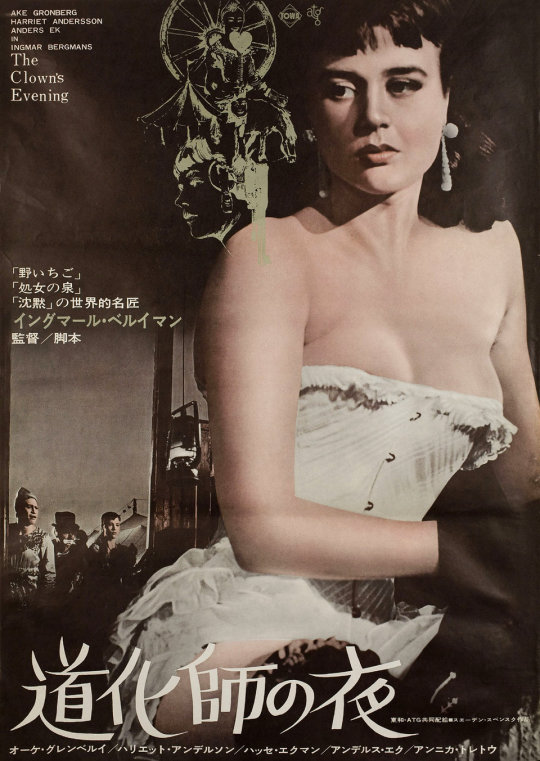


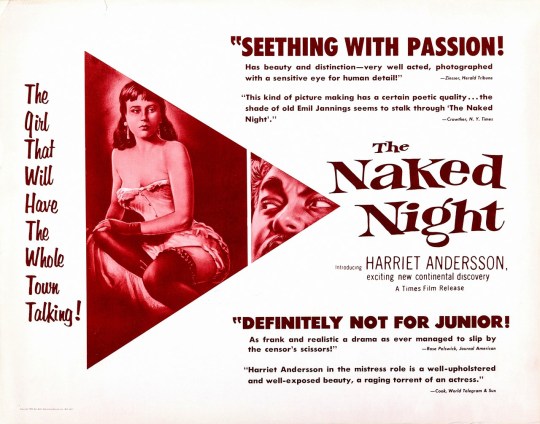
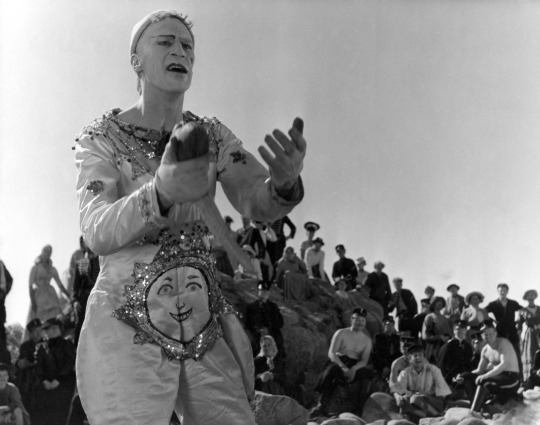
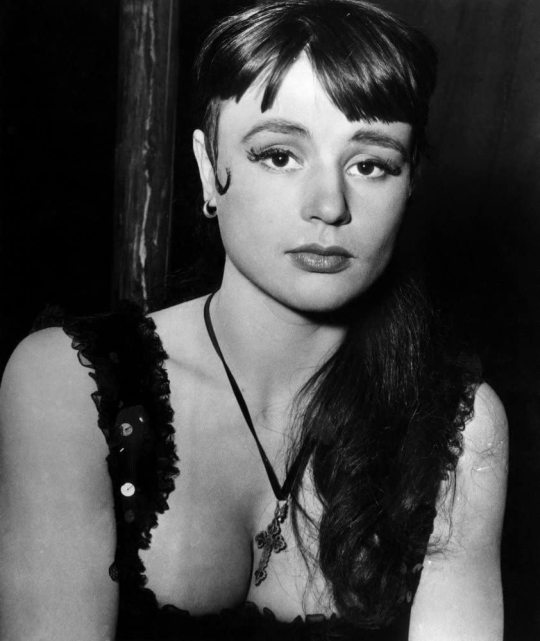
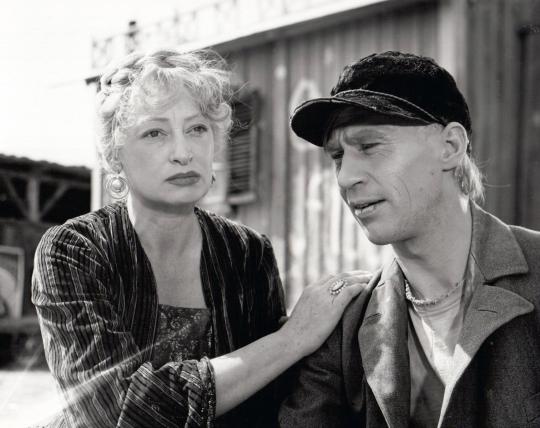
Sawdust and Tinsel (Gycklarnas afton) (1953) Ingmar Bergman
May 21st 2022
#sawdust and tinsel#gycklarnas afton#1953#ingmar bergman#ake gronberg#harriet andersson#anders ek#gudrun brost#hasse ekman#annika tretow#gunnar björnstrand#the naked night#sunset of a clown
10 notes
·
View notes
Text
2020-2021 Ranking NHL Captains by Hotness
The new Hockey season begins today! And we have some newly named captains and some glow ups, which means my annual captain rankings needs to be updated. Some moved up in rankings and some moved down, but that just the way it is.
Gabriel Landeskog (COL) Roman Josi (NSH) Blake Wheeler (WPG) Dylan Larkin (DET) Jamie Benn (DAL) Oliver Ekman Larsson (ARI) Anders Lee (NYI) Jonathan Toews (CHI) Patrice Bergeron (BOS) John Tavares (TOR) Claude Giroux (PHI) Sidney Crosby (PIT) Ryan O’Rielly (STL) Bo Horvat (VAN) Nick Foligno (CBJ) Connor McDavid (EDM) Shea Weber (MTL) Steven Stamkos (TBL) Anze Kopitar (LAK) Logan Couture (SJS) Mark Stone (VGK) Jared Spurgeon (MIN) Jack Eichel (BUF) Jordan Staal (CAR) Ryan Getzlaf (ANA) Mark Giordano (CGY) Aleksander Barkov (FLA) Alex Ovechkin (WSH)
These are all ranked by my opinion and I hope this inspires others to make their owns lists and I would love to see them!
Happy Hockey Season!
#gabriel landeskog#roman josi#Blake Wheeler#dylan larkin#jamie benn#oliver ekman-larsson#anders lee#Jonathan Toews#patrice bergeron#John Tavares#Claude Giroux#sidney crosby#ryan o'reilly#Bo Horvat#nick foligno#connor mcdavid#shea weber#anze kopitar#logan couture#jared spurgeon#jack eichel#jordan staal#Ryan Getzlaf#mark giordano#aleksander barkov#alex ovechkin#Steven Stamkos#nhl#hockey#hawkeyobsessed
31 notes
·
View notes
Photo







Sawdust and Tinsel | Ingmar Bergman | 1953
7 notes
·
View notes
Text
I need so bad gay nhl fanfics, I hate those imagines of "me" and one player, thats cringe.
#gay#hockey#nhl#boston bruins#david pastrnak#jake debrusk#sean kuraly#clayton keller#christian fischer#arizona coyotes#oliver ekman-larsson#anders bjork#barret hayton#with those teams involved yES
16 notes
·
View notes
Text

Anders Ekman (Finnish, 1833-1855) Väinämöinen Stringing his Kantele, 1855 Finnish National Gallery
#Anders Ekman#finnish art#finnish#finland#Väinämöinen Stringing his Kantele#Väinämöinen#1800s#art#fine art#european art#classical art#europe#european#fine arts#oil painting#europa#classic art#courtship#love#artwork#viking#northern europe
75 notes
·
View notes
Photo







team Sweden roster for 2018 IIHF World Championship
“C”: Mikael Backlund
“A”: Oliver Ekman-Larsson
“A”: John Klingberg
#oliver ekman-larsson#adrian kempe#lias andersson#jacob de la rose#gustav nyquist#mattias janmark#adam larsson#john klingberg#anders nilsson#mika zibanejad#rickard rakell#team sweden#iihf 2018#worlds2018#iihfwc 2018#2018 iihf world championship#world championship 2018#hockey
317 notes
·
View notes
Photo

Flicka och hyacinter (Girl with Hyacinths) (1950) - by Hasse Ekman
#flicka och hyacinter#girl with hyacinths#hasse ekman#eva henning#ulf palme#anders ek#birgit tengroth#swedish cinema#arthouse#arthouse film#arthouse movie#arthouse movies#cinema#cinephile#artistic film#50s movies#poster#poster art#vintage poster#film plakat#plakat#film poster#movie poster#vintage#film#kino#cinema poster
7 notes
·
View notes
Photo
@the-blue-fairie










Gycklarnas afton (1953)
#gycklarnas afton#sawdust and tinsel#la nuit des forains#ingmar bergman#Åke Grönberg#harriet andersson#hasse ekman#anders ek#curt löwgren
16 notes
·
View notes
Photo










Gycklarnas afton (AKA Sawdust And Tinsel) | Ingmar Bergman | 1953
#Ingmar Bergman#Bergman#Gycklarnas afton#Sawdust And Tinsel#1953#Harriet Andersson#Åke Grönberg#Hasse Ekman#Annika Tretow#Anders Ek#BF2017
91 notes
·
View notes
